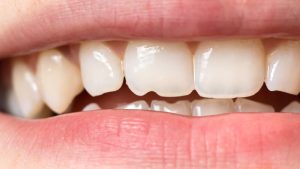It’s a disconcerting feeling – that sudden, unexpected smoothness or roughness where a filling used to be, maybe accompanied by a jolt of sensitivity or the discovery of a small, hard piece in your mouth. Losing a dental filling can range from a minor annoyance to a genuinely alarming event, sparking worries about pain, further damage, and an urgent trip to the dentist. While it’s definitely something that needs professional attention, knowing exactly what to do in the immediate aftermath can make a big difference in managing discomfort, protecting the vulnerable tooth, and preventing more serious complications down the line.
Dental fillings are workhorses, constantly subjected to chewing forces, temperature fluctuations, and the acidic environment of the mouth. While designed for durability, they aren’t invincible. Understanding why they sometimes fail, what steps to take right away, and the importance of prompt professional care is key to navigating this common dental mishap calmly and effectively. This guide provides a comprehensive walkthrough, empowering you to take the right actions when faced with a lost filling.
Why Do Fillings Fall Out Anyway? Unpacking the Common Causes
It might seem like a filling fails out of the blue, but there’s usually an underlying reason (or combination of reasons) why it lost its grip. Understanding these factors can help in preventing future issues:
- New Decay Around the Edges: This is a very common culprit. Even the best filling has microscopic margins where it meets the tooth. If plaque accumulates here, new decay can start, undermining the filling’s foundation and causing it to loosen and eventually fall out.
- Excessive Chewing Force or Trauma: Biting down unexpectedly hard on something like ice, a popcorn kernel, or hard candy can fracture the filling material or the surrounding tooth structure, dislodging the restoration. A sudden blow to the mouth can also cause fillings to fail.
- Wear and Tear Over Time: Fillings, especially older amalgam (silver) ones or large composite ones, simply wear down over years of use. The constant pressure of chewing gradually degrades the material or the bond with the tooth. Different filling materials have different expected lifespans.
- Bruxism (Teeth Grinding/Clenching): The immense, repetitive forces generated by grinding or clenching, especially during sleep, put extraordinary stress on teeth and fillings. This constant pressure can lead to cracks in the filling or tooth, or gradually break the bond holding the filling in place.
- Failure of the Bonding Agent: For tooth-colored composite fillings, the bond between the resin and the tooth enamel/dentin is critical. If moisture contamination occurred during placement, or if the bonding agent degrades over time, the filling can detach.
- Expansion and Contraction Mismatches: Older amalgam fillings expand and contract with temperature changes at a slightly different rate than natural tooth structure. Over many years, this can create micro-stresses that contribute to weakening the surrounding tooth or the filling itself.
- Chemical Erosion: Highly acidic diets or conditions like acid reflux can erode both tooth enamel and certain filling materials over time, weakening the margins.
Often, it’s not just one factor but a combination that leads to a filling’s demise. Regular dental check-ups are crucial because your dentist can often spot signs of a failing filling (like cracks, marginal leakage, or surrounding decay) before it actually falls out.
That Sinking Feeling: Immediate Steps When Your Filling is Gone
Okay, so it happened. You’ve realised your filling is missing. Don’t panic! Take a deep breath and follow these steps systematically:
1. Assess and Retrieve (If Possible)
Carefully check your mouth. If you can locate the filling (or pieces of it), remove it gently to avoid swallowing or inhaling it. Don’t worry excessively if you can’t find it or think you might have swallowed it; small filling pieces usually pass through the digestive system without issue. However, retrieving it prevents any potential choking hazard.
2. Cleanse the Area Gently
Rinse your mouth thoroughly with lukewarm salt water. Mix about half a teaspoon of table salt into a glass of warm (not hot) water. Swish gently for 30 seconds and spit it out. Why salt water? It helps to:
- Cleanse away food debris from the exposed cavity.
- Reduce bacteria levels temporarily.
- Soothe irritated gum tissue around the affected tooth.
Avoid harsh antiseptic mouthwashes unless specifically advised by your dentist, as they might irritate the exposed inner tooth layers.
3. Protect the Tooth: Avoid Chewing on That Side
The tooth structure under a filling is often weaker and now lacks its protective covering. Chewing directly on the affected tooth significantly increases the risk of:
- Causing pain or sensitivity.
- Fracturing the remaining weakened tooth structure.
- Packing food debris tightly into the exposed cavity.
Make a conscious effort to chew on the opposite side of your mouth until you see your dentist.
4. Manage Discomfort and Sensitivity
Losing a filling often exposes the dentin layer beneath the enamel, which contains tiny tubules leading towards the tooth’s nerve. This can cause sensitivity to hot, cold, sweet foods/drinks, or even just air. If you experience pain:
- Take over-the-counter pain relievers like ibuprofen (Advil, Motrin) or acetaminophen (Tylenol) according to package directions. Ibuprofen can be particularly helpful as it also reduces inflammation.
- Avoid temperature extremes – stick to lukewarm foods and drinks.
- See “Temporary Fixes” below for specific relief measures like clove oil.
5. Consider Temporary Protection (Optional but Recommended)
Covering the exposed area can significantly reduce sensitivity and help keep food out. We’ll discuss these options in more detail next.
6. Call Your Dentist ASAP!
This is the most crucial step. A lost filling is not usually a dire dental emergency requiring an immediate middle-of-the-night visit, but it absolutely requires prompt professional attention. Call your dentist’s office as soon as possible during business hours. Explain what happened. They will likely want to see you within a day or two, or perhaps sooner if you are in significant pain or the tooth feels very sharp or broken. Don’t delay making this call.

Bridging the Gap: Temporary Fixes Explained (Use with Caution!)
While waiting for your dental appointment, using a temporary measure can provide significant relief from sensitivity and help protect the tooth. These are available over-the-counter at most pharmacies. **Important:** These are strictly temporary solutions and do NOT replace the need for professional dental treatment.
1. Dental Wax
Orthodontic wax (the kind used for braces) or specific dental wax can be softened slightly between your fingers and pressed gently over the exposed cavity or sharp edge. * Pros: Readily available, easy to apply, provides a smooth surface, reduces sensitivity to air/tongue irritation. * Cons: Doesn’t seal the cavity well, can be dislodged easily by eating, offers minimal protection against decay.
2. Temporary Filling Material (OTC Dental Cement)
Kits specifically designed for temporarily replacing lost fillings often contain a zinc-oxide-based material. You typically mix a small amount or use a pre-mixed paste and press it into the cleaned, dry cavity. * Pros: Creates a better seal than wax, offers more protection against food impaction and temperature sensitivity, can last a bit longer (though still temporary). * Cons: Can be tricky to apply correctly, might feel bulky or unnatural, *must* be removed by the dentist before permanent restoration. Follow kit instructions precisely. Make sure the cavity is dry before application for better adhesion.
3. Clove Oil (Eugenol) for Pain Relief
Clove oil contains eugenol, a natural analgesic and antiseptic. If you have significant sensitivity or pain: * Application: Apply a *tiny* amount using a cotton swab directly onto the exposed dentin within the cavity. Avoid getting much on the surrounding gums as it can be irritating. * Pros: Can provide effective temporary pain relief. * Cons: Taste can be strong/unpleasant, relief is temporary, potential for gum irritation if misused. Use sparingly.
Remember, the goal of these temporary measures is comfort and short-term protection, not a permanent fix. They buy you time until your dentist can properly assess and treat the tooth.
Why You Can’t Just “Wait and See”: Risks of Delaying Treatment
Putting off that dental visit after losing a filling might seem tempting, especially if there’s no immediate pain, but it’s a risky gamble. Here’s why prompt treatment is essential:
- Increased Sensitivity and Pain: What starts as mild sensitivity can quickly escalate into significant pain as the exposed dentin becomes more irritated or if decay progresses closer to the nerve.
- Risk of Deeper Decay and Infection: The exposed cavity is an open door for bacteria. Food debris gets packed in, plaque forms rapidly, and decay can advance much faster into the softer dentin than it does through enamel. This can lead to infection of the tooth’s pulp (nerve).
- Potential for Tooth Fracture: Fillings provide structural support. Without that support, the remaining tooth structure, especially cusps, is significantly weakened and much more susceptible to cracking or fracturing under normal chewing forces. A fracture can be much harder (and more expensive) to fix than simply replacing a filling.
- Need for More Complex (and Costly) Treatment: Delaying treatment often means the problem gets worse. A simple filling replacement might turn into needing a larger filling, a dental crown (cap), or even root canal treatment if the decay reaches the pulp or the tooth fractures badly. Early intervention is almost always simpler and more cost-effective.
- Compromised Oral Hygiene: It can be difficult to clean the affected tooth properly, leading to plaque buildup and potential gum inflammation around it.
Think of it this way: addressing a lost filling quickly is like fixing a small pothole before it turns into a giant crater that damages your car’s suspension. Prompt action saves you pain, trouble, and expense in the long run.

The Dentist’s Toolkit: Professional Solutions for a Lost Filling
Once you’re in the dental chair, your dentist will assess the situation thoroughly. They’ll examine the tooth, check for any decay or fractures, possibly take an X-ray, and discuss the best course of action based on their findings.
1. Simple Replacement (New Filling)
If the underlying tooth structure is sound, there’s no significant new decay, and the tooth isn’t fractured, the most likely solution is simply to replace the filling. The dentist will:
- Clean out any remaining old filling material or minor decay.
- Prepare the cavity shape appropriately.
- Place a new filling material.
Modern options for dental fillings include tooth-colored composite resins (most common), durable amalgam (silver-colored), or sometimes porcelain or gold inlays/onlays for larger cavities. Your dentist will discuss the best material for your specific situation.
2. When More Support is Needed: Dental Crowns
If the lost filling was very large, if significant new decay is present, or if the remaining tooth structure is weakened or fractured (especially involving a cusp), a simple filling might not be strong enough. In these cases, a dental crown (or cap) is often recommended. A crown covers the entire visible portion of the tooth, providing strength, protection, and restoring its shape and function. This requires preparing the tooth (reshaping it), taking impressions, and fabricating the crown in a lab or sometimes chairside with CAD/CAM technology.
3. Addressing Deeper Issues: Root Canal Treatment
If the decay has reached the tooth’s pulp (the inner chamber containing the nerve and blood vessels), or if the pulp has become infected due to trauma or deep decay associated with the lost filling, root canal treatment will be necessary. This procedure involves removing the infected or inflamed pulp, cleaning and disinfecting the root canals, and sealing them. After a root canal, the tooth typically requires a crown for long-term protection and strength, as it becomes more brittle.
Preventing a Repeat Performance: Keeping Fillings Secure
While no filling lasts forever, you can definitely take steps to maximize their lifespan and reduce the risk of them falling out:
- Stellar Oral Hygiene: This is paramount. Brushing twice daily with fluoride toothpaste and flossing daily helps prevent new decay from forming around filling margins.
- Mindful Eating Habits: Be cautious with extremely hard foods (ice, hard nuts, popcorn kernels, hard candies) and very sticky foods (chewy caramels, taffy) that can stress or dislodge fillings.
- Address Bruxism (Grinding): If you grind or clench your teeth, discuss options with your dentist. Wearing a custom-fitted night guard can protect your teeth and fillings from excessive forces. Sometimes, stress management or even treatments addressing jaw muscles are part of the solution. Evaluating bite alignment via orthodontic treatment might also be considered in complex cases contributing to bite stress.
- Regular Dental Check-ups and Cleanings: Visiting your dentist routinely (usually every six months) allows them to examine your fillings, check for early signs of failure (like cracks or leaky margins), and address potential problems before the filling actually falls out. They can also spot and treat new decay early.
Conclusion: Taking Swift Action Protects Your Smile
Losing a dental filling can certainly be unnerving, but it’s a manageable situation. By taking immediate steps to protect the tooth, manage discomfort, and – most importantly – contacting your dentist promptly for professional assessment and treatment, you can prevent further complications like pain, infection, or tooth fracture. Remember that fillings have a lifespan, and proactive prevention through good oral hygiene, mindful eating, addressing issues like grinding, and regular dental visits is your best defense against unexpected filling loss. Swift action ensures your tooth gets the care it needs to stay healthy and functional for years to come.
Lost a Filling? Genç Dental Can Help Restore Your Tooth
That moment a filling comes loose can leave you feeling vulnerable and concerned. At Genç Dental, we understand the urgency and provide prompt, compassionate care for patients who have lost a filling. Our experienced dental team will quickly assess the situation, alleviate any discomfort, and determine the most appropriate and durable solution to restore your tooth’s health, function, and appearance.
Using modern materials and techniques, we can replace fillings, place protective crowns, or perform root canal therapy if needed, always prioritizing your comfort and long-term oral health. Don’t wait for sensitivity to turn into pain or for a small problem to become a bigger one. Contact Genç Dental today to schedule your appointment. Let us take care of your lost filling and get your smile back to its best.










